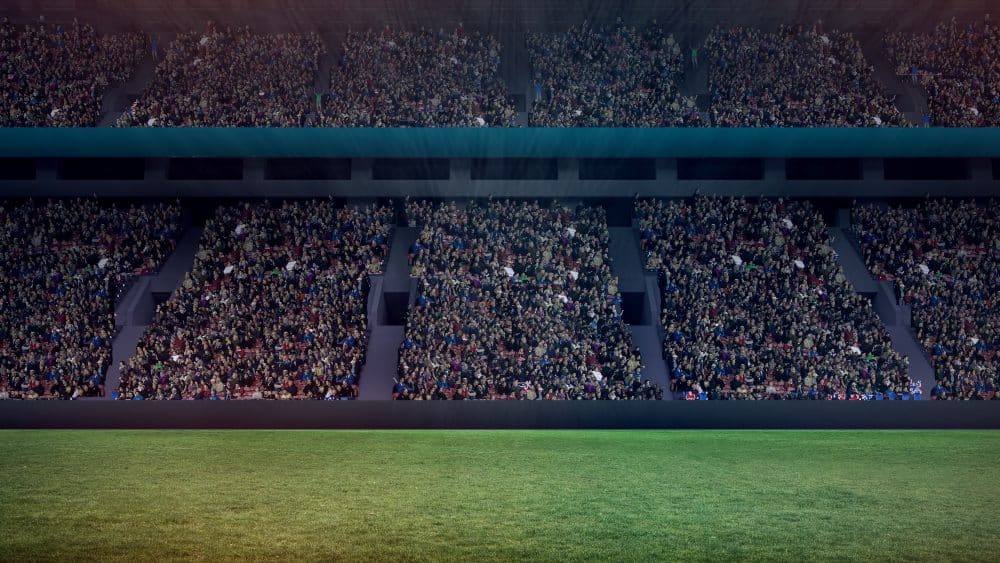EXCLUSIVE: Challenges in stadium and sports venue security


Victoria Rees
Share this content
Bill Frain, CEO of Liberty Defense says that striking a balance between safety and fan experience can help to mitigate the threats faced by stadiums and improve sports venue security.
Within the many considerations and facets of managing a sports venue or stadium, security remains a paramount concern for both organizers and attendees, right up there with the experience of sports fans. Often, it’s challenging for sports venues to balance both of those objectives effectively and seamlessly.
Over the last several months, security executives have shared with me that new challenges have emerged since fans resumed attendance at sports events after the COVID pandemic, including the evolution of novel threats.
The top three challenges:
- Staffing in general and training staff on security protocols
- New threats emerging on top of old threats and outdated technology
- Balancing security protocols with customer experience to reduce long lines
While most stadiums have implemented various measures and technologies to enhance security and deal with the persistent challenges, some are struggling with how to solve today’s security challenges.
Staffing and training on sports venue security protocols
One of the continuing challenges faced by stadium and sports venue security is the recruitment, training and retention of capable security staff. The scale and complexity of ensuring large sports venue security necessitates a well-trained and experienced security team. However, finding individuals with the appropriate skill set, trainability and commitment can be an ongoing struggle.
In addition to recruitment challenges, training is crucial to ensure staff members stay up to date on the latest security protocols specific to their venue’s operational guidelines. Regular training must equip security personnel to respond effectively to various security threats and the oftentimes manual security practices exacerbate the issue.
With manual security checks still a reality, staff training needs can be more significant than if automated technology were to assist in the process. However, various technologies exist today that improve the security screening process and are part of a layered security approach.
New threats emerging on top of old threats
Security threats continue to emerge and stadiums must adapt their safety measures proactively. With gun violence on the rise, traditional weapons are indeed a concern that requires a vigilant approach – but what about the new threats emerging from bad actors in recent years? Three-dimensionally printed guns and ghost guns have become a concern to law enforcement with an increasing number of seizures of these plastic weapons that can evade metal detectors. In addition, explosives made of plastic, liquid or powder can be improvised in such a way as to be undetectable by current screening technology.
The US Department of Homeland Security recently issued a bulletin warning that “Lone offenders and small groups motivated by a range of ideological beliefs and personal grievances continue to pose a persistent and lethal threat to the Homeland,” including places with large gatherings, like sporting events. These groups have many threats at their disposal, not just guns and knives but also explosive materials that can do catastrophic damage. So, while traditional weapons such as guns continue to be a threat, it is important that screening technology be able to detect a broader range of threats.
Metal detectors and enhanced metal detectors that can only detect metal weapons such as guns and knives leave a gap in protection for sports venue security. What’s more, traditional metal detectors contribute to a slow manual screening process. Many venues still use the metal detectors of yesterday which call for fans to empty their pockets of all items, creating long lines.
Fortunately, the rapid advancement of technology has introduced solutions for sports venue security that can mitigate risk, reduce long lines and increase the potential for a positive customer experience. Body scanners using millimeter wave and AI can scan for prohibited items without the need to divest items from pockets or remove jackets can provide the answer to many of today’s issues. These scanners look for any type of threat or anomaly on the person and can be customized for a specific venue’s needs for security. The flexibility and mobility of the system provides an enhanced security capability that improves safety for patrons.
Next-generation body scanners will also automate the screening process, giving security operators a go/no-go decision, reducing the need for manual intervention. In the case of an alarm, the AI and machine learning algorithms will direct the security operator to where the threat is located, reducing the need for a full person search.
Other technologies and applications for sports venue security are also available to support a layered security approach, like facial recognition, access control, remote screening and X-ray baggage scanners that can automate the screening process.
Outdated security systems and infrastructure can render stadiums vulnerable to these new threats, emphasizing the need for regular assessments and upgrades for sports venue security. Stadium management must allocate resources to stay abreast of the latest security technologies and collaborate with experts to implement robust measures that address both existing and emerging threats.
Balancing security protocols with customer experience and long lines
While ensuring the safety of fans is of utmost importance, it is equally crucial to strike a balance between stringent security protocols and providing an enjoyable fan experience. Long lines at sports venue security checkpoints can significantly hamper the overall experience for attendees, leading to frustration and discontent. The lines and bottlenecks also create a security risk given the volume of people in one area. Not only that, but the sooner fans can be cleared by security to enter the venue, the sooner they can begin to purchase concession items to enjoy.
To mitigate this challenge, stadiums can adopt innovative solutions such as advanced screening technologies, expedited entry lanes for pre-approved fans or mobile ticketing systems. Implementing these measures can enhance sports venue security while reducing wait times, resulting in a smoother entry process and improved fan satisfaction.
Takeaways
Stadium and sports venue security remains an ongoing challenge that requires constant attention and adaptation to address evolving threats. Staffing and training initiatives should include leveraging next-generation screening technology to reduce the amount of training and effort needed to conduct manual screening. Stadium management must remain vigilant and invest in these updated technologies and infrastructure to mitigate both existing and emerging threats.
While prioritizing sports venue security is paramount, it is essential to strike a balance between stringent protocols and providing fans with an enjoyable experience. By implementing innovative solutions, stadiums can maintain a secure environment while ensuring fans have a memorable and enjoyable time. With continued efforts and collaboration among security professionals, stadium management and technology experts, the sports industry can work towards creating safer and more engaging experiences for fans in an environment where they feel safe and protected.
About the author

Bill Frain is the CEO of Liberty Defense, a company currently commercializing the HEXWAVE system for walkthrough people screening.
This article was originally published in the July edition of Security Journal Americas. To read your FREE digital edition, click here.


